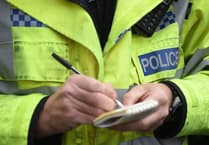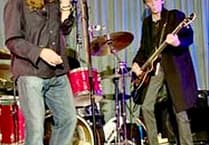AN appeal has been launched for a permament riverside memorial to a world-renowned scientist who died with 10 others in a Second World War plane crash beside the Wye.
The death of Alan Dower Blumlein near Welsh Bicknor on June 7, 1942, robbed the Allies of a driving force in the top secret development of airborne radar, and the crash in a field below the Courtfield Estate was hushed up on Winston Churchill’s orders so as not to alert the Germans.
Six scientists and five crew had taken off from RAF Defford near Worcester on a Halifax bomber converted into a flying laboratory, but perished on the return journey from south Wales when the aircraft caught fire over the Forest of Dean.
Bernard Lovell, who was later knighted for his work founding and running Jodrell Bank Observatory, had flown on the plane the day before and reputedly gave up his seat on the fatal flight.
But 38-year-old Blumlein – who included the invention of stereo sound recording among his achievements and was posthumously honoured with a Grammy award last year – died alongside close colleagues Cecil Oswald Browne and Frank Blythen in the UK’s worst ever military test flight tragedy.
The crash scene was quickly sealed off by military guards while a team led by Lovell recovered the highly-secret cavity magnetron the plane had been carrying, and few details of the tragedy leaked out.
Seventy six years on, thousands of walkers pass the spot on the Wye Valley Walk without realising its tragic significance.
But that could all be about to change as the nation remembers the centenary of the Armistice, after walks writer Garth Lawson launched a £5,000 appeal to put up a memorial to a man who did much to help the Allies win the war.
His family has welcomed the appeal to mark his memory.
“He was one of the greatest electronics engineers ever to have lived, contributing not just to the world of audio but to early telecommunications, the television system adopted by the BBC in 1936 and, during World War II, in the development of the crucial H2S Airborne Radar system that contributed greatly to Britain winning the war,” says Alan Blumlein, who shares his grandfather’s name.
“Recognition of my grandfather’s work has been sporadic outside the audio recording industry.
“In 1977, the London GLC mounted a blue plaque on the last house that he lived in at 37, The Ridings in Ealing, London, and in 2008, a building at RAF Defford was named the “Alan Blumlein Building” by Princess Anne.
“On April 1, 2015 an event was held at Abbey Road Studios, in the famous Studio Two, to celebrate an Institute of Electrical and Electronics Engineers (IEEE) Milestone Award for the invention of stereo, and a plaque now sits outside the entrance.”
Just last year, 75 years after his death, the Recording Academy presented the scientist’s family with a posthumous Technical GRAMMY in New York.
Mr Lawson is making the appeal in partnership with the Hereford Times, and a justgiving page says: “While the contributions of other Second World War boffins such as Alan Turing, who helped crack the Nazis’ Enigma code, and radar pioneer Bernard Lovell have been lauded, Blumlein’s role has been largely overlooked.
“We plan a permanent memorial to Blumlein and his colleagues who died in that crash near Welsh Bicknor 76 years ago. It will take the form of a metal plaque mounted on a plinth near a riverside path overlooking the site of the tragedy.”
In 1992, on the 50th anniversary of the plane crash, a Radar memorial stained glass window was dedicated at Goodrich Castle to the 11 who died.
To support the riverside memorial appeal, go to www.justgiving.com/crowdfunding/glawson




